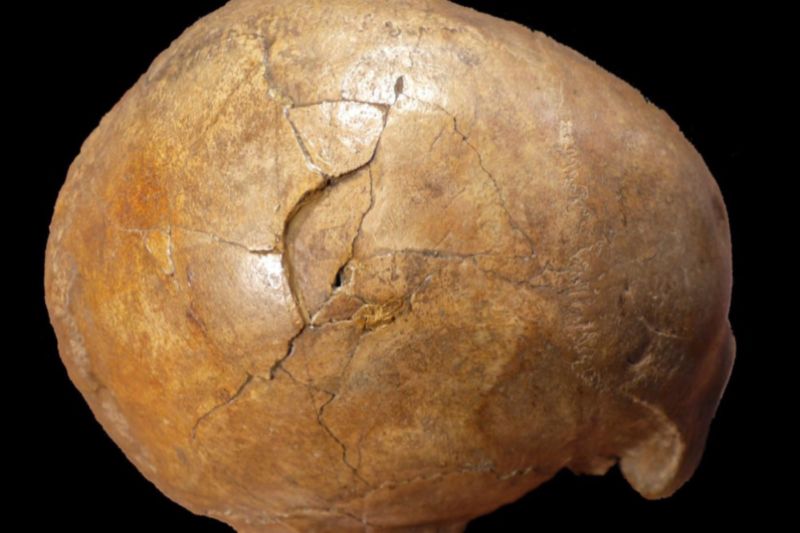Study concludes 33,000-year-old skull shows signs of blunt-force trauma

Enlarge / Right lateral view of the Cioclovina calvaria exhibiting a large depressed fracture. A new paper concludes this is evidence of fatal blunt-force trauma. (credit: Kranoti et al, 2019)
Some 33,000 years ago, a man was violently clubbed to death by a left-handed attacker wielding a club or similar object. That's the conclusion of an international team of scientists, who published the results of their forensic analysis in a recent paper in PLOS ONE.
The so-called Cioclovina calvaria is a fossilized skull around 33,000 years old, discovered in a cave in South Transylvania in 1941 during a mining operation. That makes it one of the earliest fossilized human remains yet known, so naturally it has been studied extensively by scientists interested in learning more about the Upper Paleolithic period, which started around 40,000 to 45,000 years ago and marks the major dispersal of modern humans in Europe.
"The Cioclovina individual is particularly important, as it is one of the earliest and relatively complete skulls of modern Europeans from the Upper Paleolithic period," co-author Katerina Harvati of Eberhard Karls University of Tubingen in Germany told Live Science. "Human remains from this period are very rare and often very fragmentary."
Read 9 remaining paragraphs | Comments